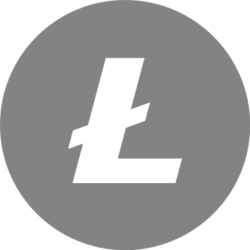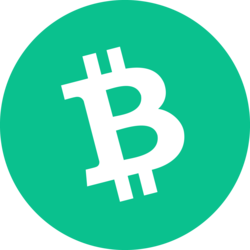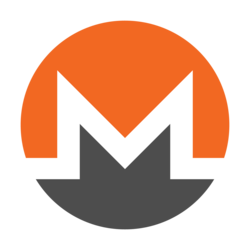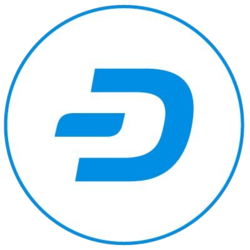As the technological landscape keeps evolving, the convergence of two forces – Artificial Intelligence (AI) and Blockchain technology – has the potential to reshape reality. Imagine a future where financial transactions, healthcare records, and even voting systems are not only secure but also smart enough to self-optimize.
This is not a script for a science fiction movie. It’s the reality that the Integration of AI and blockchain is poised to offer. Artificial Intelligence brings its learning capabilities to the table, while blockchain contributes an unbreakable ledger system. Together, they’re set to revolutionize technology, creating smarter, more secure, and more efficient systems.
This article explores the explosive convergence of AI and blockchain technology. Read on to learn how it’s set to innovate industries worldwide.
The Synergy Between AI and Blockchain
Both the AI and blockchain worlds are booming simultaneously. AI and blockchain do not just coexist – they reinforce and revolutionize each other. Let’s consider some figures to estimate the significance of this integration.
The Market In Focus
- The global AI market size is projected to grow at a compound annual growth rate (CAGR) of 36.8% from 2023 to 2030.
- Likewise, the blockchain technology market is set to experience significant growth, with a projected CAGR of 87.7% from 2023 to 2030, emphasizing its increasing prominence.
Understanding the synergy between AI and blockchain is crucial for solving complex problems. Their groundbreaking integration has the potential to revolutionize various industries. Together, they unlock a realm of possibilities, strengthen security, enhance decision-making, and foster a new wave of decentralized applications.
The Benefits of Revolutionary Integration
Firstly, it’s essential to understand the fundamental principles of both technologies. AI, or Artificial Intelligence, refers to the simulation of human intelligence processes by machines. It encompasses machine learning and deep learning, enabling computers to learn from experience, adapt to new inputs, and perform human-like tasks efficiently.
On the other hand, blockchain technology is a decentralized digital ledger that ensures secure and transparent recording of transactions across multiple computers. Now, why does integrating AI with blockchain matter? This synergy offers several compelling advantages:
- Improved Security: The integration of AI and blockchain can enhance data security and integrity by predicting and preventing threats in unprecedented ways. Blockchain’s ability to provide a transparent and tamper-proof record ensures that the AI models using the data can provide trustworthy and secure recommendations.
- AI-Powered Smart Contracts: Smart contracts, the self-executing contractual states stored on blockchain, were already revolutionary. Now, AI elevates their capabilities to new heights. AI feeds them with dynamic data, enabling them to make decisions and act upon changing conditions in real-time. This integration enables contracts to learn and adapt during interactions rather than just following pre-set rules.
- Democratization Through Decentralized AI: By leveraging blockchain as a distributive platform, AI’s previously centralized capabilities are broadcast across an open, shared network. The AI’s collective intelligence is no longer limited to the proprietary vaults of large corporations. Instead, it becomes a shared resource that benefits a wider community, propelling innovation within the tech sphere.
Pioneering The Synergy: TFS Project
TFS Token has sparked significant interest within the dynamic landscape of blockchain technology, particularly in crypto gaming. Created by Fairspin, a pioneering iGaming platform, TFS Token represents a promising blockchain project. This token introduces innovative functionalities to users and opens the door to smart earning avenues.
Launched in 2021 as Fairspin’s proprietary crypto coin, the TFS Token is built on the Ethereum blockchain. It operates on the ERC-20 standard and is the core of Fairspin’s ecosystem, offering unique programs, which are listed below.
- Hold To Earn: TFS Token holders can participate in the Hold to Earn program and earn a percentage of Fairspin’s platform daily income as a reward. The potential annual percentage rate (APR) is remarkable, reaching up to 500%.
- Liquidity Staking: users can stake TFS Tokens alongside USDT (Tether) stablecoins within TFS-USDT pools on the PancakeSwap DEX. Participants receive a share of Fairspin’s Gross Gaming Revenue (GGR), with potential rewards increasing as the platform grows.
- Play To Earn: TFS Tokens can be earned as a tokenized cashback for playing on the Fairspin platform. This feature ensures immediate rakeback, regardless of the bet outcome.
In addition to these profitable initiatives, the TFS project offers much more progressive benefits for its participants:
- Transparency and Security: The TFS Token ecosystem operates on a secure, transparent public blockchain, guaranteeing visibility and accountability for transactions, data, and user assets.
- Rewards and Incentives: TFS Token holders can earn rewards for their contributions, such as staking yield, transaction fees, and token distribution events, which add extra value to their holdings.
- Increasing Value: With the current exchange rate averaging $0.0052, the TFS Token price prediction is expected to rise between $0.0082 and $0.0122 in the near future. These facts embody the vitality of the TFS Token within the crypto market and highlight its evolving nature.
With multiple innovative features, the TFS project not only shapes the future of smart gaming but also pioneers a new wave of decentralized, transparent, and rewarding digital interactions.
Top Crypto AI Projects
The integration of AI and blockchain transforms various industries, implementing unique value to each platform. Let’s explore some top crypto AI projects with great potential in 2024 and beyond to emphasize their groundbreaking synergy with blockchain.
1. Fetch.AI (FET): $2.41B market cap
Fetch.AI is a blockchain project leveraging AI and machine learning to create autonomous software agents for apps to leverage economic work. The project focuses on streamlining business operations and trading. Its mission is to facilitate smart contracts, dApps, and digital services using AI. The FET token, an ERC-20 utility token, fuels the ecosystem.
- Key Innovations:AI’s use of Autonomous Economic Agents (AEAs), the Open Economic Framework (OEF), and the Fetch Smart Ledger distinguishes it. It optimizes various sectors, including smart cities, supply chains, and beyond.
- Impact and Applications:AI is used in DeFi, transportation, energy, mobility, and healthcare. It enables intelligent systems and decentralized applications, promoting efficiency and transparency.
- Future:AI’s 2023 roadmap includes microagent deployment and partnerships with industry giants like Bosch to drive AI adoption in various sectors.
2. SingularityNET (AGIX): $1.34B market cap
SingularityNET is a decentralized AI platform running on blockchain that aims to develop Artificial General. The project aims to provide a marketplace for AI algorithms and apps. It allows users to seamlessly create, share, and monetize AI services using blockchain technology.
- Key Innovations: SingularityNET integrates Knowledge Graphs and Neural Symbolic tools with Large Language Models (LLMs) to enhance neural networks, allowing developers to build advanced AI solutions that surpass conventional capabilities.
- Impact and Applications: SingularityNET is utilized in supply chain, DeFi, transportation, energy, mobility, and healthcare. It enables intelligent systems and decentralized applications, promoting efficiency and transparency. Additionally, SingularityNET assists in teaching coding and real-world app integration.
- Future: SingularityNET focuses on developing Internet of Knowledge, improving scalability, and enhancing integration with decentralized networks. Upcoming features include MeTTa integration, OpenCog Hyperon AGI Framework, and JavaScript Decay. Their notable partnerships include Genescient, Dfinity Foundation, World Mobile, and Fetch.ai.
3. Ocean Protocol (OCEAN): $1.13B market cap
Ocean Protocol is a blockchain-based platform revolutionizing data sharing and exchange. This technology incorporates data tokens to control data access and compute-to-data functionality, enabling private data utilization in AI models without direct sharing. Additionally, the Ocean Market streamlines the exchange of data token assets.
- Key Innovations: Ocean Protocol innovates with decentralized data exchange, tokenization, scalable data services, and rewards for data sharing. By integrating Knowledge Graphs and Neural Symbolic tools with Large Language Models (LLMs), Ocean Protocol also advances neural networks, enabling the development of advanced AI solutions.
- Impact and Applications: Ocean Protocol is used in healthcare for medical data sharing, financial data analysis, energy optimization, logistics, and environmental sustainability. Its use of large language models assists in teaching coding and makes complex programming concepts accessible to beginners.
- Future: Ocean Protocol’s roadmap includes accelerating Predictor’s growth, launching a “C2D springboard,” and rolling out Ocean Enterprise. Partnerships with Oasis, AI Gaming Coalition, and NIM Network aim to bring AI to gaming and enhance financial innovation.
4. Render Token (RNDR): $4.31B market cap
Render Token (RNDR) aims to provide a decentralized GPU rendering service on the blockchain. It connects content creators who need high-end rendering resources with individuals who have idle GPUs. The technology is built on the Ethereum blockchain, allowing users to monetize their idle GPU power by contributing it to the rendering network.
- Key Innovations: RNDR introduces a decentralized GPU rendering network, integrating AI and blockchain to secure and enable digital content creation. It leverages idle GPUs to process rendering jobs, mitigates fraud risks, and guarantees fair costs.
- Impact and Applications: RNDR is currently used in gaming, architecture, advertising, AI, and the metaverse. It powers visual effects for movies, remastered films, game engines, 3D modeling, AI applications, and the creation of phygital assets (assets that exist in both physical and digital forms).
- Future: RNDR’s roadmap includes accelerating AI adoption in gaming and partnerships focused on driving AI innovation. It aims to address the GPU supply and demand gap by enhancing scalability and usability and forming innovative partnerships with organizations like NVIDIA and the AI Gaming Coalition.
5. The Graph (GRT): $3.55B market cap
The Graph is a decentralized protocol for indexing and querying blockchain data, making it easier for developers to build decentralized applications (dApps). It’s like the Google of blockchains. The Graph uses the GraphQL programming language for data processing and stores blockchain data in indexes known as subgraphs.
- Key Innovations: The Graph has introduced AI-assisted querying with large language models to enhance web3 development, enabling more efficient and accurate data querying and indexing.
- Impact and Applications: The Graph (GRT) is used as a medium of exchange for various services within and outside its ecosystem. Real-world applications include decentralized finance (DeFi), non-fungible tokens (NFTs), and various blockchain-based projects.
- Future: The Graph’s roadmap includes significant developments. These include migrating the entire protocol to Arbitrum, a widely used L2 chain, and focusing on Firehose, Substreams, and the Sunset of the Hosted Service to enhance indexing speed and scalability.
Challenges and Considerations
The integration of AI and blockchain technology by top crypto AI projects holds big promise for revolutionizing various industries. However, the integration process has challenges and requires careful consideration to ensure successful implementation. The following challenges and considerations are noteworthy:
- Scalability: Integrating AI into blockchain networks often faces scalability limitations due to difficulty in managing substantial data volumes.
- Interoperability: Lack of standard protocols complicates seamless communication between different blockchain networks and AI systems. This limitation makes smooth communication difficult across various systems and may result in compatibility issues.
- Data Privacy: Issues concerning data privacy, security, and transparency significantly affect the integration process. Addressing these challenges is crucial to guarantee the secure and ethical utilization of data.
- Consensus Mechanisms and AI: The static nature of blockchain’s consensus mechanisms can conflict with the dynamic nature of AI algorithms.
- Regulatory Implications: Incorporating legal and regulatory factors into the integration process adds layers of complexity. Compliance with regulations, especially those governing sensitive data, becomes critical when integrating AI and blockchain solutions.
Additionally, the integration of blockchain and AI paves the way for enhanced Decentralized Autonomous Organizations (DAOs) and smart contracts. AI-driven automation streamlines and refines DAO decision-making processes, while smart contracts benefit from AI’s predictive capabilities, enhancing their adaptability and responsiveness to changing situations.
The integration transforms various sectors, such as supply chain, healthcare, and finance. By securely sharing data between parties, it could improve transparency in supply chains, enhance financial security, and personalize medical treatments.
Conclusion
The integration of AI and blockchain presents a transformative opportunity across industries. It envisions a future where data-driven decisions are not only secure but also smart and efficient. This merging drives innovation, pushing us toward a more connected and smart world.
As we navigate the challenges, the promise of revolutionizing technology remains within reach with promising blockchain projects like TFS by Fairspin. Together, AI and blockchain pave the way toward a new era of transparency, security, and decentralized decision-making.
The inevitable future is here – dive in and explore the benefits of integrating blockchain and AI with TFS!



























